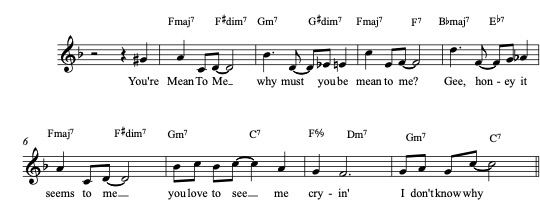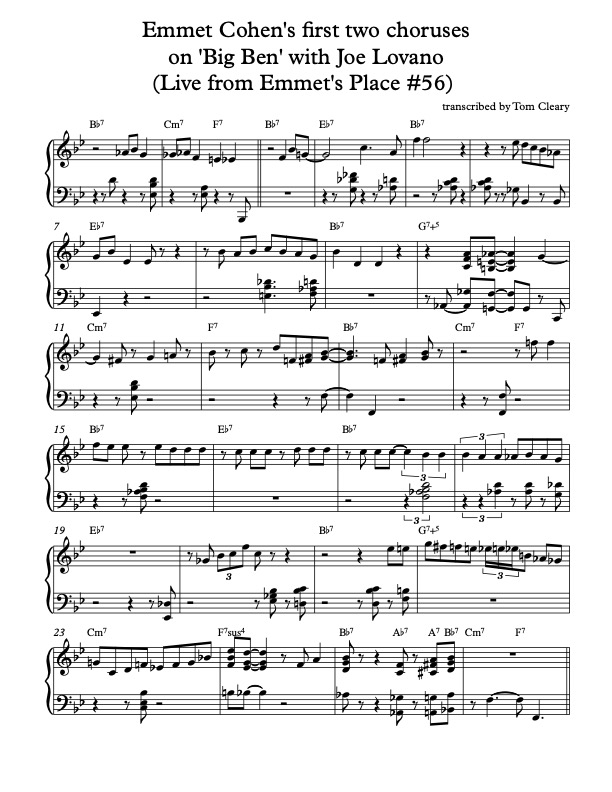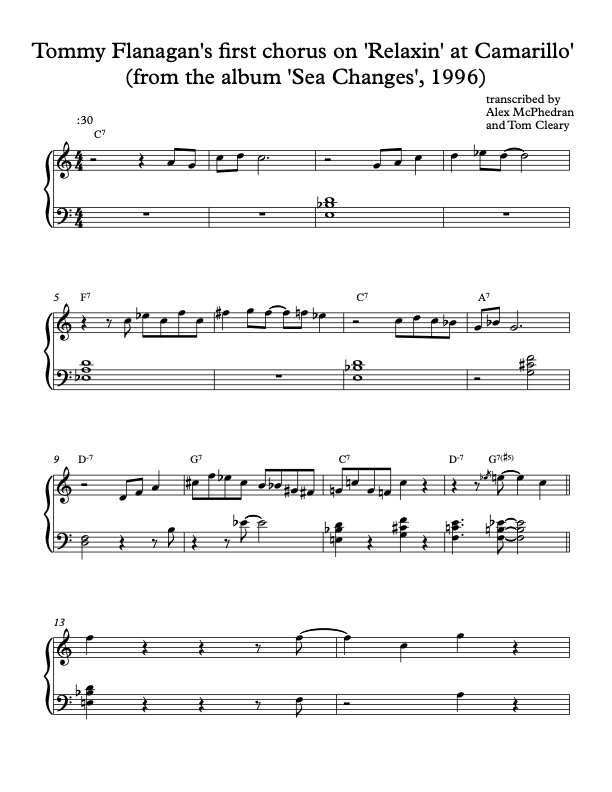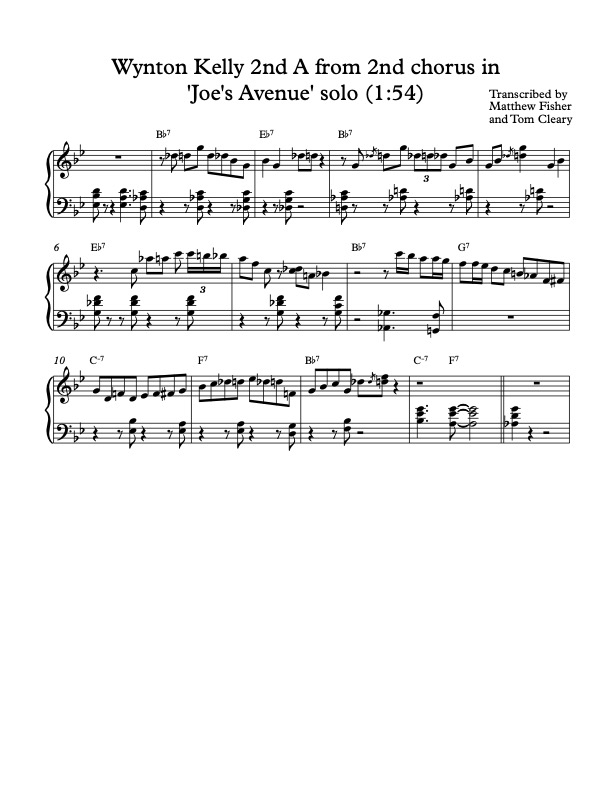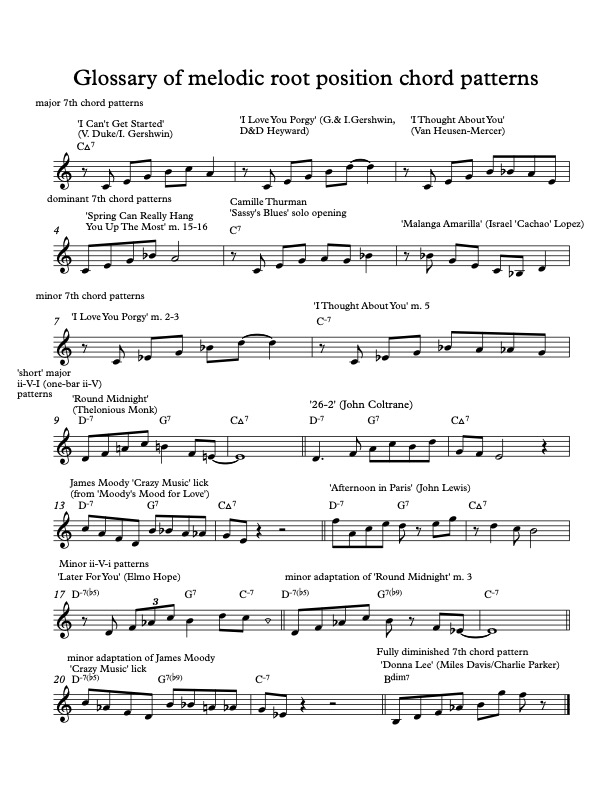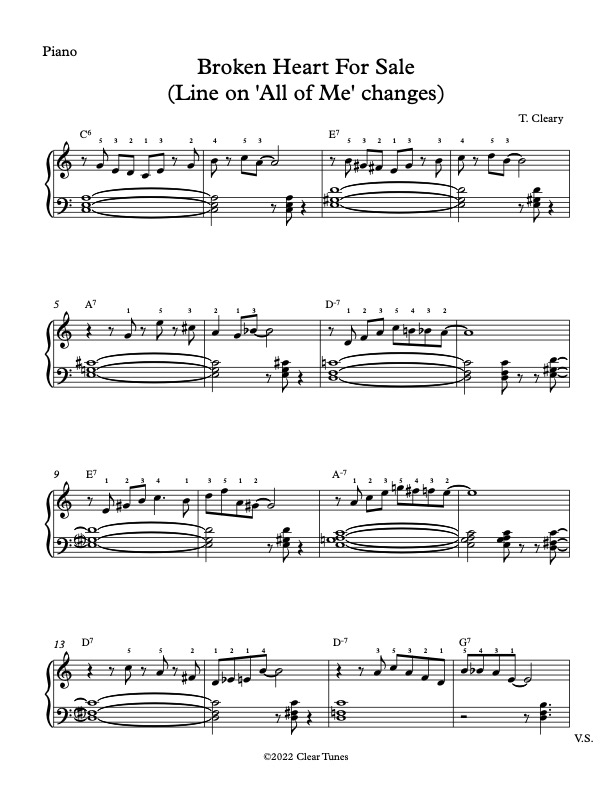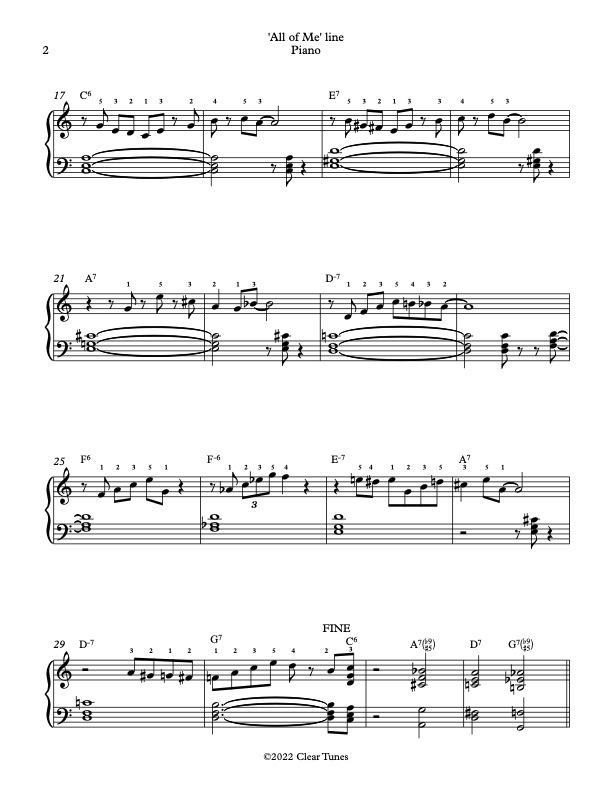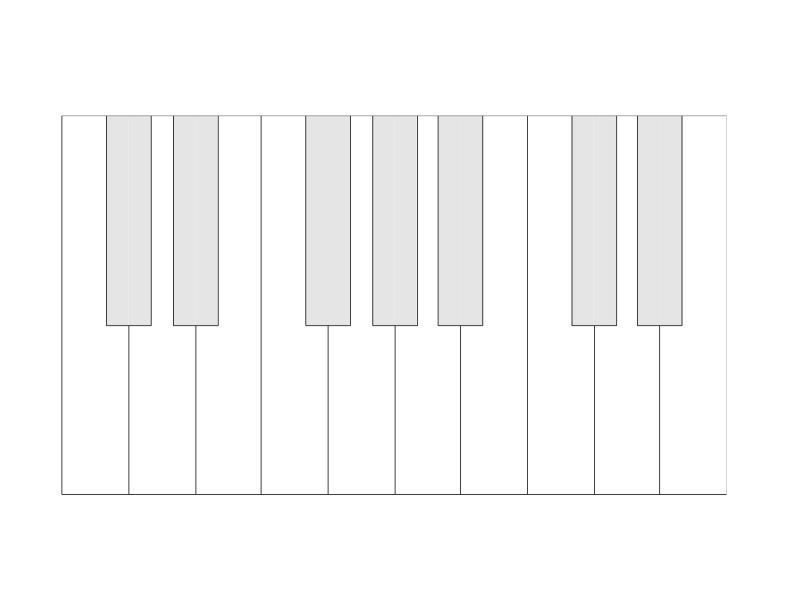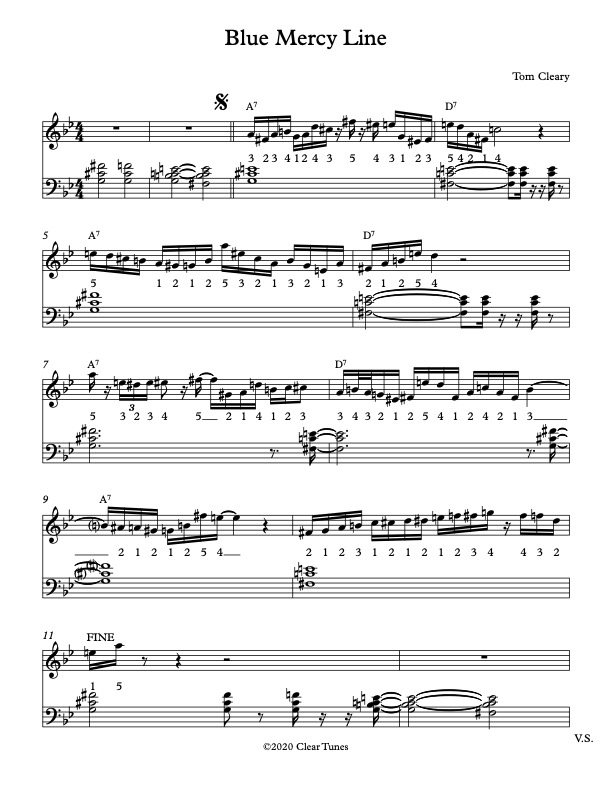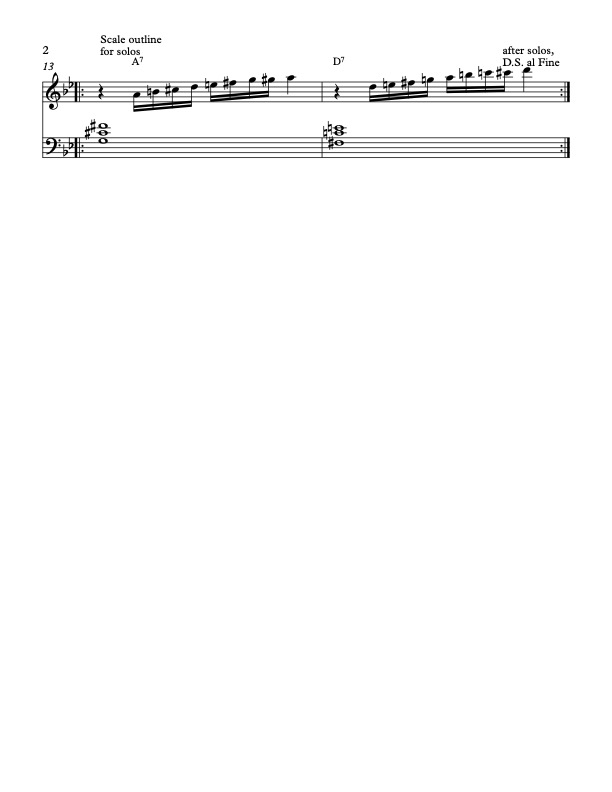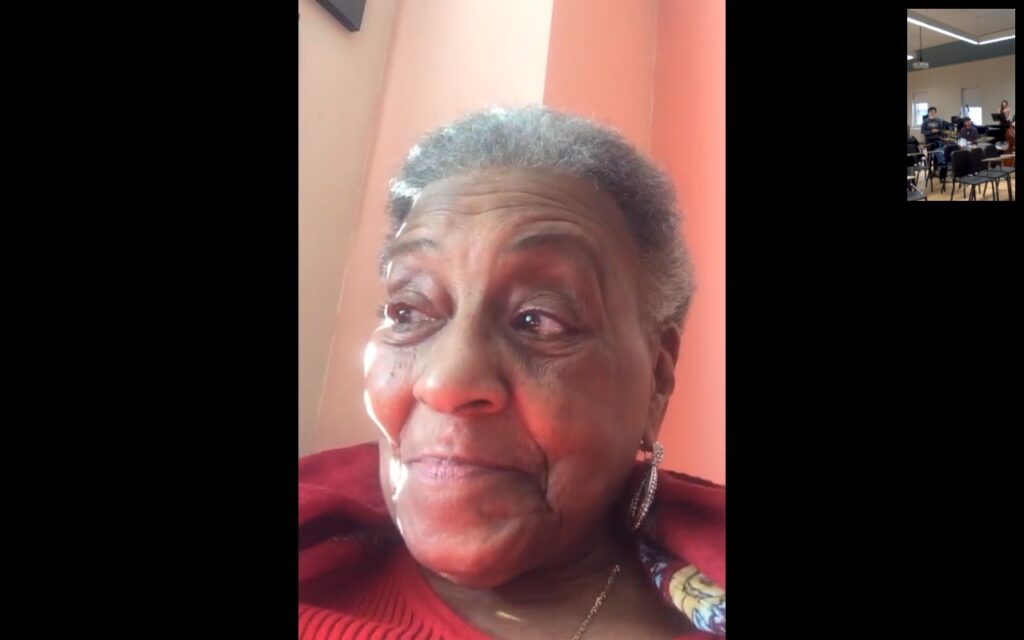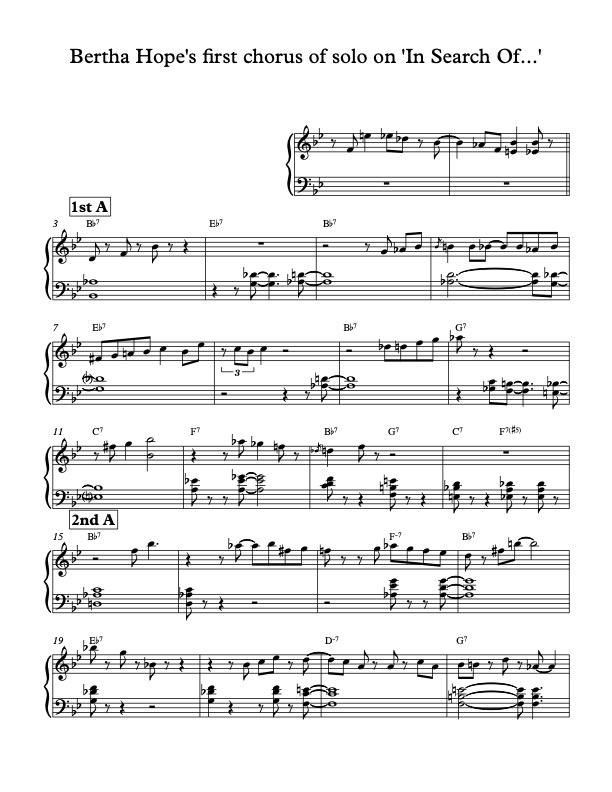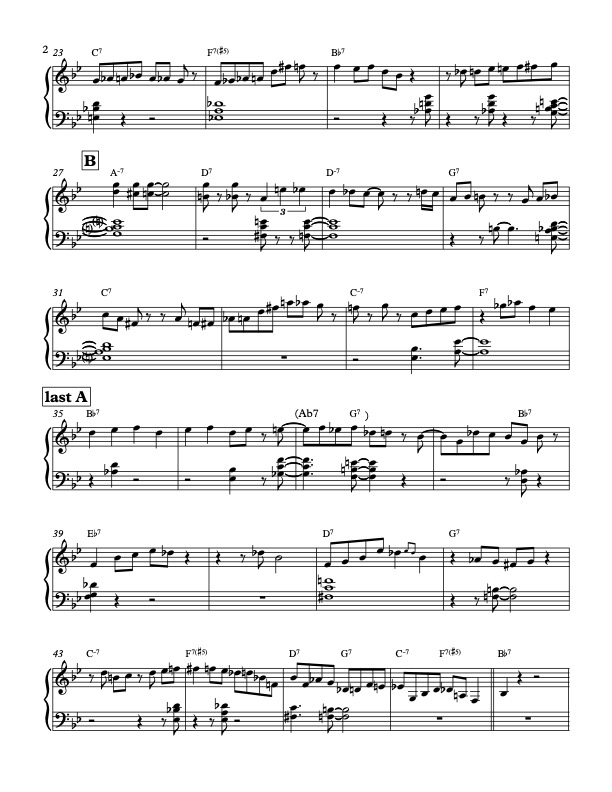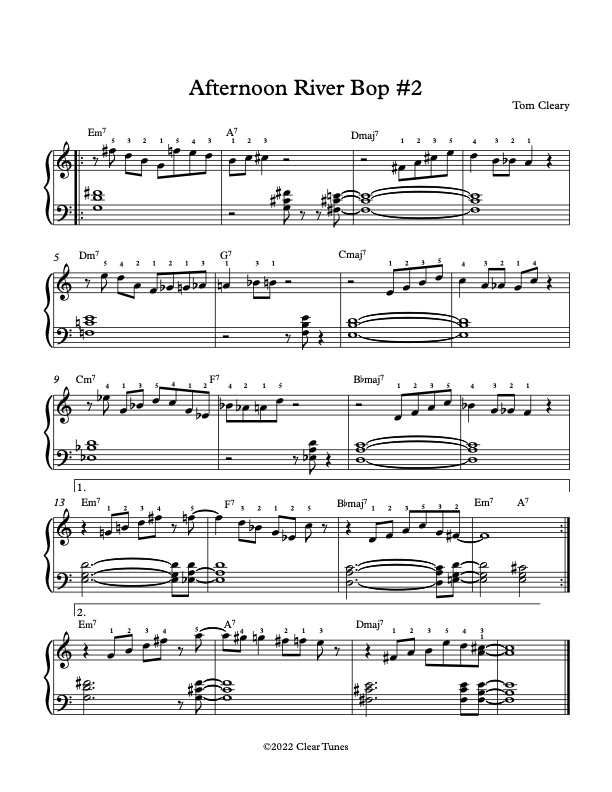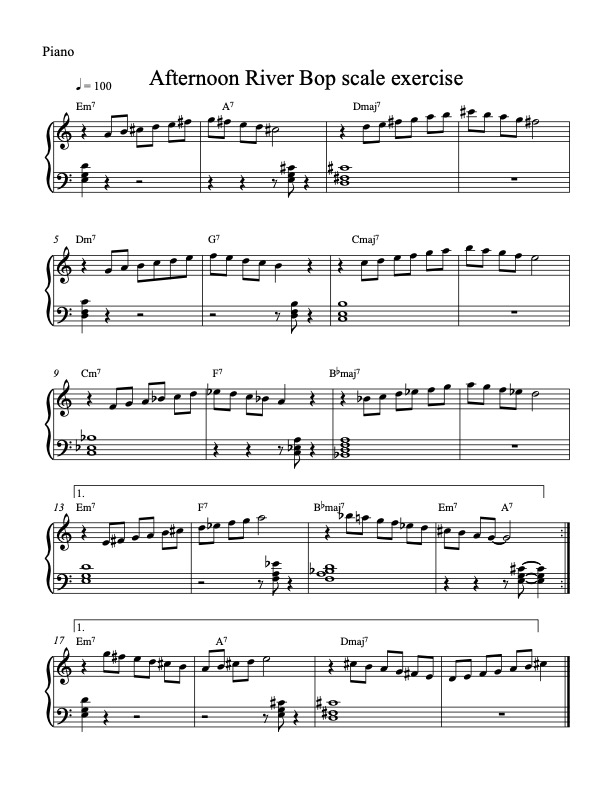In two well-known melodies, one from the late 1950s and another from the mid-1960s, the ascending minor seventh interval is used to symbolize reaching for a not-yet-attained goal. Leonard Bernstein and Stephen Sondheim’s ‘Somewhere’, first performed in 1957 as part of the musical ‘West Side Story’, begins with an ascending minor 7th that accompanies the lyric ‘there’s a place for us’. The lyric of the phrase that follows – ‘somewhere a place for us’ – reveals that the place has not yet been found. In light of this thought, the ascending minor seventh begins to symbolize a reaching for this goal. The three note motive that opens the song – an ascending minor 7th followed by a descending minor 2nd – appears a number of other parts of the score, including the The Cool Fugue that follows the song ‘Cool’ and the song I Have A Love which is paired with ‘A Boy Like That’. (The version of A Boy Like That/I Have A Love I have linked to features Rita Moreno in 1961, and the version of Somewhere I have linked to is Moreno in 2021.) Leave a comment in the comment section if you can find the timing in the videos of Cool/Cool Fugue and A Boy Like That/I Have A Love, or the lyrics in those songs, where the ‘Somewhere’ motive appears.
The vocal melody of Alexander Courage’s theme to the original Star Trek series also begins with an ascending minor 7th. The voiceover that precedes the theme in the show’s opening introduces the mission statement of the starship Enterprise: ‘to boldly go where no man has gone before’. Like the singer in ‘Somewhere’ (who in the original stage production was offstage and therefore anonymous), the crew of the starship Enterprise in Star Trek also seeks the unknown. Gene Roddenberry’s little known and infrequently sung lyrics to the theme refer to a lover who, like the ‘place for us’ in West Side Story, is out of reach for now: ‘beyond the rim of the starlight / my love is wandering in starflight’. The most musically faithful interpretation of the tune I have found is by Jack Black and Kyle Gass of Tenacious D. In this performance, Black and Gass demonstrate that, as with all great musical humorists, their comedy is built on a foundation of solid musicianship.
On the version of My Favorite Things sung by Mary Martin on the original Broadway cast recording of The Sound Of Music, the tune’s switch from E minor to E major between its second and third verses (at :37) is introduced with a short waltz vamp introducing the new mode. On his iconic version of My Favorite Things, John Coltrane expands this vamp, making it into a longer modal interlude where he improvises on the newly introduced major mode. While the common practice in jazz at the time, including on Coltrane’s previous albums, was for improvising to take place over a tune’s chord progression (rather than its intro), Coltrane’s version of ‘My Favorite Things’ was groundbreaking in that most of the improvisation by both Coltrane and pianist McCoy Tyner in its thirteen-minute-plus duration occurred on these modal interludes that extended the vamps of the original version. In the parts of the arrangement where Tyner plays tune’s chord progression (considerably altered by bassist Steve Davis playing an E pedal tone rather than the chord roots), Coltrane states the melody with various kinds of rhythmic re-interpretation and ornamentation and saves his development of original melodic ideas for the vamp sections (See my discussion of McCoy Tyner’s solo below for more on the definition of ‘modal’.) At one point during the first major-key modal interlude (at 1:18), Coltrane begins developing the perfect fifth with which the melody begins, narrowing it to a perfect fourth before expanding it to wider intervals including an ascending minor 7th:
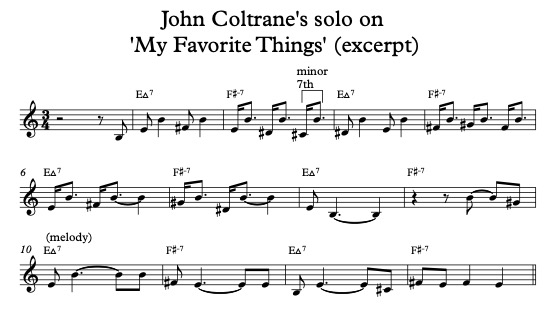
The melody of Coltrane’s composition ‘Naima‘ prominently features an descending minor 7th between its third and fourth notes ; this interval is later balanced by an ascending minor 7th in the bridge.
Sondheim’s song ‘Anyone Can Whistle‘ also features an early descending minor 7th which he matches with the third word of the title in the lyrics (emulating a common descending whistling pattern.) The descending minor 7th on ‘whistle’ that symbolizes simplicity (despite being tricky to sing), is followed by an ascending major 7th that accompanies the first two words of the phrase ‘it’s all so simple’. This interval (on the lyrics ‘it’s all’) contrast this carefree thought in the lyrics with a musical interval that is arguably more strenuous to sing than the one Sondheim chooses for ‘whistle’. This contrasts suggests that the character singing the song is skeptical of the sentiment he’s repeating to the listener. A few lines later in the lyrics, the singer reveals in words the perspective that he telegraphed earlier with melody notes: ‘it’s all so simple / relax, let go, let fly / so someone tell me why can’t I?‘ (italics mine).
Another major 7th sung by a character who is reaching for something is in the song ‘Pure Imagination’, sung by Gene Wilder as the title character in the film Willy Wonka And The Chocolate Factory. Although he seems at first to be a carefree Pied Piper, Wonka is also a hardworking and calculating salesman. Leave a comment in the comment section if you can identify the place where the melody of ‘Pure Imagination’ has an ascending major 7th either by giving the timing in the video and/or mentioning the lyric(s) where the interval occurs.
At one point during his solo over the major-key vamp in My Favorite Things (approximately 4:47), McCoy Tyner repeats a C sharp in his right hand as his left alternates between root position E major seventh and F sharp minor seventh voicings. (I am calling these ‘voicings’ rather than chords because these note stacks are not functioning the way they would in the chord progression of a jazz standard or bebop tune. What makes this a modal vamp rather than a chord progression is that while the piano alternates between these two voicings, the bass alternates between the root and fifth of only the E major seventh and doesn’t play the root of the F#m7, and the melodic material of both Tyner’s solo and Coltrane’s solos on this vamp stays centered on the E major scale and, like the bass, doesn’t make any moves to specifically reference the F#m7 (whether through an arpeggio or another melodic phrase that outlines that chord.) Tyner is moving voicings along the E major scale rather than moving chords through a progression.) In his right hand solo, Tyner eventually expands the repeated C sharp into a descending perfect fifth (C#-F#), acknowledging but also innovating on Coltrane’s earlier development of the ascending 5th. He transposes this up a minor 3rd to E-A and then expands into wider intervals, including a ascending an descending major 7th. Leave a comment in the comment section if you can find the timing of the place in the transcription below where Tyner plays the ascending and descending major sevenths.

